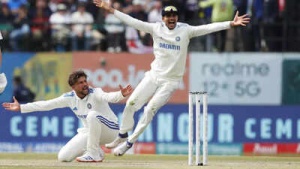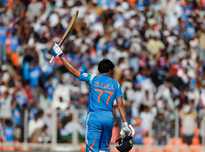The untimely death of Indian actress Shefali Jariwala has sparked widespread concern and initiated a crucial conversation about women's heart health. While the official cause of death is pending further investigation, initial reports suggest a cardiac arrest. This highlights a disturbing trend of sudden cardiac events affecting seemingly healthy, middle-aged women.

Sudden cardiac death (SCD), once considered rare among young adults, is becoming increasingly prevalent, particularly in India. Cardiovascular diseases account for a significant portion of deaths in the country, with a notable percentage attributed to SCD. What's alarming is that many of these cases occur in individuals between 30 and 50 years old.
India's evolving socioeconomic landscape contributes to this rise. Lifestyle changes, including:
These factors are fueling a surge in conditions like hypertension, obesity, diabetes, and coronary artery disease, all of which are major risk factors for SCD.
Historically, SCD was more common in men. However, recent research emphasizes the unique and often overlooked risks faced by women. Unlike men, women who experience SCD often have no prior diagnosis of heart issues. Structural abnormalities, such as myocardial scarring and ischemic heart disease, can go undetected and are only discovered during post-mortem examinations. Furthermore, many women don't exhibit typical warning signs like chest pain or ECG abnormalities, making early detection incredibly difficult.
Women in their 40s and 50s, like Shefali Jariwala, face a silent, yet serious, risk from underlying cardiac conditions. In younger individuals, SCD is often linked to inherited or electrical disorders such as:
These conditions often present no symptoms until a fatal arrhythmia occurs.
Other contributing factors in this age group include:
The progression of myocardial scarring and fibrosis with age can be linked to:
Conditions like Myocardial Infarction with Non-Obstructive Coronary Arteries (MINOCA), which are more common in younger women, may not leave any detectable traces in autopsies, further complicating diagnosis.
Stress also plays a significant role. Takutsobo cardiomyopathy (Broken Heart Syndrome), or stress-induced cardiomyopathy, is a major cause of SCD in women who multitask and experience emotional stress. Shefali Jariwala also faced personal challenges, including divorce, anxiety, depression, and epilepsy, all of which can intersect with cardiovascular health. Psychiatric medications, particularly those that prolong the QT interval, have also been associated with an increased risk of SCD.
Despite the severity of the issue, women are often underrepresented in preventive heart care. Symptoms like fatigue, palpitations, or breathlessness are frequently dismissed or misattributed, leading to delays in crucial intervention. While heart attacks are caused by blocked arteries, cardiac arrest results from electrical disturbances that cause the heart to stop suddenly. Immediate CPR and defibrillation are often the only lifesaving measures, underscoring the critical importance of early risk identification.
Medical experts are advocating for more targeted public health strategies to improve early screening tools tailored to women, particularly during perimenopause when cardiac risks increase.
The entertainment industry and fans mourn the loss of Shefali Jariwala, her tragic death is a catalyst for change. Her passing highlights an overlooked health crisis and the urgent need for a systemic change in how women's heart health is addressed.
Shefali Jariwala was a star who captivated audiences with her on-screen presence. In the wake of her untimely passing, she may be remembered as a symbol of awareness, a reminder that the heart's silence can be fatal and that women's cardiac health demands immediate attention, investment, and action.
Newer articles
Older articles
 Black Caps Announce Packed 2025-26 Home Schedule Featuring Australia, England, West Indies & South Africa
Black Caps Announce Packed 2025-26 Home Schedule Featuring Australia, England, West Indies & South Africa
 Jaiswal Aims to Eclipse Gavaskar's 49-Year-Old Record as India Seeks Series Leveler at Edgbaston
Jaiswal Aims to Eclipse Gavaskar's 49-Year-Old Record as India Seeks Series Leveler at Edgbaston
 Rishabh Pant: Greg Chappell Lauds Indian Star's Game-Changing Cricket Revolution
Rishabh Pant: Greg Chappell Lauds Indian Star's Game-Changing Cricket Revolution
 Samsung Unveils Galaxy A35 5G and A55 5G Pricing, Specs, and Availability
Samsung Unveils Galaxy A35 5G and A55 5G Pricing, Specs, and Availability
 5 Silent Signals: Spotting Prediabetes Without a Blood Test
5 Silent Signals: Spotting Prediabetes Without a Blood Test
 Cummins Lauds Australia's Solid Start in New World Test Championship Campaign
Cummins Lauds Australia's Solid Start in New World Test Championship Campaign
 Science-Backed Strategies: 5 Simple Habits for a Healthier Heart
Science-Backed Strategies: 5 Simple Habits for a Healthier Heart
 Anish Giri's Jesting Remark Highlights Praggnanandhaa's Rise to Top Junior Chess Ranking
Anish Giri's Jesting Remark Highlights Praggnanandhaa's Rise to Top Junior Chess Ranking
 India vs England: Calls Mount for Kuldeep Yadav's Inclusion in Edgbaston Test Amid Strategic Reworking
India vs England: Calls Mount for Kuldeep Yadav's Inclusion in Edgbaston Test Amid Strategic Reworking
 The subtext of Gill's selection
The subtext of Gill's selection